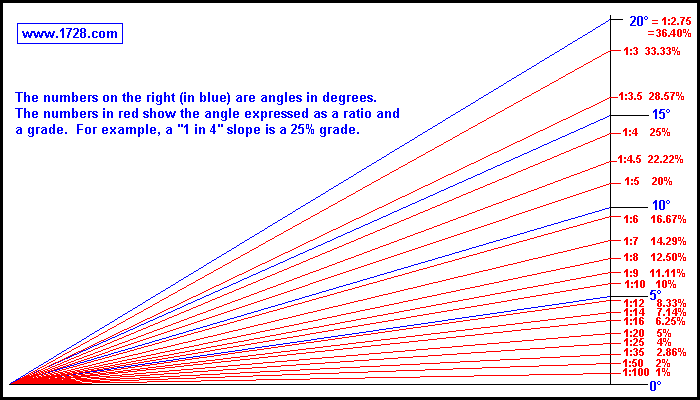Quick Guide: Ratio to Percentage Conversion for Gradients
To download this learning summary as a PDF, click here.
1. What is a gradient?
Without going too technical on it, a gradient describes a change between values – say ‘X’ and ‘Y’. You may recall the ‘rise over run’ method being taught during your primary education. We often see gradients incorporated into planning rules and standards. Gradient is most often expressed as a ratio (i.e., 1:4) or as a percentage (i.e., 25%).
2. How do I convert ratios to percentage for gradient, or vice-versa?
Often there can be inconsistencies in the ways that technical standards within planning documents represent gradients – which can make it hard to know if you project complies with those standards. Here is a quick way to convert between the two:
Ratio to Percentage:
Formula: 100 ÷ Second number in ratio = Percentage.
Example: Ratio of 1:20 given
Step 1: Identify that the second number in the ratio is ‘20’.
Step 2: Follow formula: 100 ÷ 20 = 5
Answer: 5% gradient is your answer.
Percentage to Ratio:
Formula: 100 ÷ Percentage = X (second number in ratio). Your answer then represents a ratio of 1:X.
Example: Percentage of 5% given
Step 1: 100 ÷ 5 = 20
Answer: 1:20 gradient is your answer.
4. Seriously, can’t you just show us this on a chart?
Okay, the following chart is helpful, but unless you’re going to carry it around everywhere you go, try to remember how to do the maths yourself!
4. Summary
Maths can be tricky but there are quick ways to convert between percentages and ratios. There are also many free online calculators that can help, including this one!


